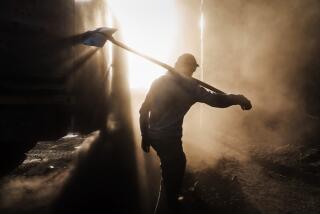Border problem
AFGHANISTAN, DEVASTATED BY a quarter-century of Soviet invasion and occupation, civil war and rule by the Taliban, faces even more violence before next month’s historic vote for parliament. The U.S. should demand that Pakistan do its part for Afghan democracy by better policing its border.
Much of the world’s attention has been riveted on Iraq, where nearly 1,900 U.S. soldiers and thousands of Iraqis have been killed since the invasion in March 2003. But the Taliban and its sibling, Al Qaeda, continue to roam Afghanistan, where this year more American soldiers -- 65 -- have died than in any year since 2001.
Afghans elected Hamid Karzai, a Washington favorite, as president last year after a campaign and election that were largely quiet despite Taliban threats. This year a supposed Taliban spokesman said the group would not attack polling places or voters but would continue to try to kill U.S. troops and Afghan security forces.
Especially ominous are the allegations from Afghan military officials that Taliban fighters and their allies are learning new and more lethal tactics from the Pakistani military next door. Although Pakistan’s Inter-Services Intelligence agency helped create the Taliban a decade ago, Pakistani President Pervez Musharraf denies his country currently supports any Afghan insurgents.
But a Pakistani journalist recently reported that at least some training camps that were closed on Musharraf’s orders have been reopened. Captured fighters have told of finding refuge in Pakistan and easily crossing the border to attack Afghanistan. The border is nearly 1,500 miles, much of it mountainous and rugged, supposedly patrolled by 70,000 Pakistani soldiers. The U.S. knows the problem of policing borders, be it America’s with Mexico or Syria’s with Iraq. Yet Pakistan manages to shut down infiltration routes into India when it chooses; it has the same ability on its western border. Islamabad can do a better job in stopping Taliban and Al Qaeda fighters.
The U.S. and NATO have reinforced their troop strength to prepare for the Sept. 18 election. Nearly 6,000 candidates filed for parliament; voters will elect a lower house, one-third of the upper house and provincial councils. Despite the continuing violence of recent years, the country has adopted a constitution, elected a president and now will install a legislature. The problems are enormous, from bumper heroin crops to rule by warlords, as well as Taliban and Al Qaeda attacks. But there have been successes as well, thanks to U.S. leadership and support from allied nations. Next month’s balloting can be a major step on Afghanistan’s road to democracy.
More to Read
Sign up for Essential California
The most important California stories and recommendations in your inbox every morning.
You may occasionally receive promotional content from the Los Angeles Times.










